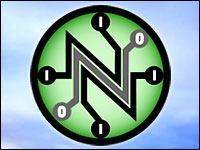
The European Parliament on Thursday approved new Net neutrality rules.
Net neutrality, both in the EU and in the U.S., refers to the concept of requiring Internet Service Providers to treat all traffic the same regardless of its source. In Europe, that means ISPs such as Vodafone or Deutsche Telekom can’t deliver content from competitive providers of, say, online videos, via slower pipes or make them pay more.
If the U.S. had a Net neutrality framework in place, it would mean that Comcast, for example, couldn’t charge Netflix additional fees for streaming its content to Comcast customers. Put another way, Comcast couldn’t charge its customers for streaming Netflix’s content.
As it happens, Netflix and Comcast recently struck a deal over high-performance content streaming.
Comcast is prohibited from throttling Internet access for any customers for several years, under an agreement with the government that was a prerequisite for approval of its 2011 NBCUniversal acquisition.
Across the Atlantic
Europe’s Net neutrality is not a foregone conclusion. The next parliament, to be elected in May, must approve the rules as well. Then, individual countries would have to reach their own agreements with the European Commission on implementation of national laws.
At each point, lobbying on both sides is expected to be fierce.
Still, the EU measure provides more certainty on the issue than exists in the U.S., where regulatory agencies responsible for overseeing the communications infrastructure fumbled the Net neutrality ball, said Charles King, principal of Pund-IT.
Earlier this year, in Verizon v. Federal Communications Commission, the D.C. Circuit Court of Appeals struck down Federal Communications Commission rules that mandated ISPs treat all Internet data the same — that is, refrain from blocking or throttling legitimate content that a paying customer was accessing over their pipes.
Democrats in Congress subsequently introduced The Preservation Act to restore what the court vacated in the case, but it is unlikely to pass in the current political environment.
“I think what is most interesting about the European measure is that they were actually able to address the issue,” King told the E-Commerce Times.
The situation in the U.S. is characterized by a government regulatory apparatus that is more disposed to business than consumers, a telecom industry “that does not have a history of being particularly friendly to consumers, and the ever-growing need for bandwidth among users,” he said, concluding, “the EU is doing a better job than what anyone in the U.S. is doing about all this.”
Despite its reputation for consumer-friendly legislation, Europe had its own problems pushing this measure through. The carriers fought hard against the measure, Ross Buntrock, a partner at Arent Fox, told the E-Commerce Times.
The battle was a veritable “dogfight” between the carriers and consumer groups, he said.
Besides the Net neutrality law, the measure eliminates roaming fees by December 2015, which “will cost the carriers millions,” Buntrock said. “The vote effectively created a single market for telecom services across Europe.”
U.S. consumers would love to see something similar, but their voice counts the least in this process, Sang Nam, associate professor of communications at Quinnipiac University, told the E-Commerce Times.
“People in the U.S. feel the same urgency to adopt Net neutrality … as Europeans do,” he said, “but when it comes down to media giants and their profit, the U.S. government and the FCC can’t do much about Net neutrality.”
Corporate lobbying on this issue is more muted that it might otherwise be, Nam continued, since many media companies belong to cable companies that provide Internet services.
“Media giants who also own cable companies won’t give up their profit easily, and they will do everything they can to make their competition look bad,” he pointed out.
One factor behind the success in Europe’s Net neutrality vote was the European Commission’s planning and its moves to make the issue part of its digital agenda with the help of the Body of European Regulators for Electronic Communications, Nam noted.
“It was more a top-down initiative with support from end-users,” he said, “and that’s why the European Parliament could achieve this.”












































Social Media
See all Social Media